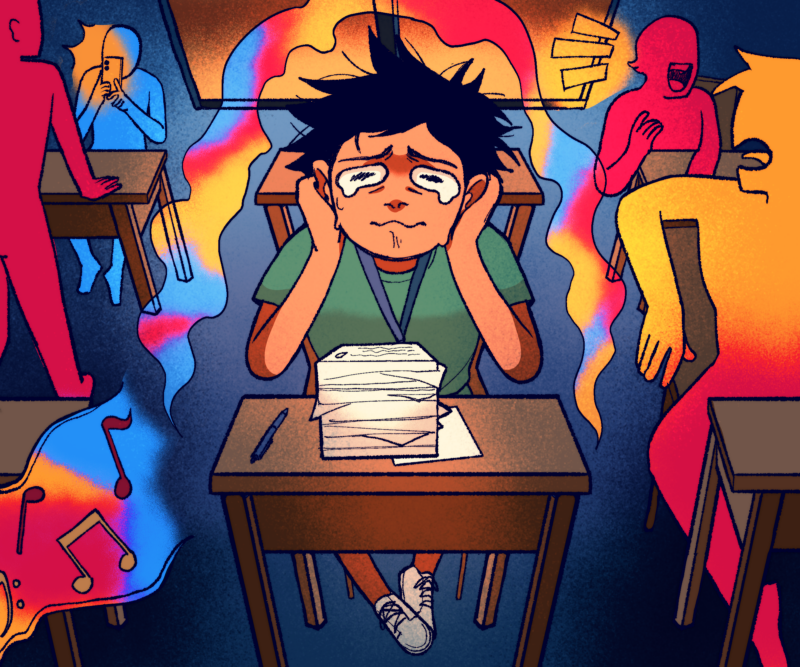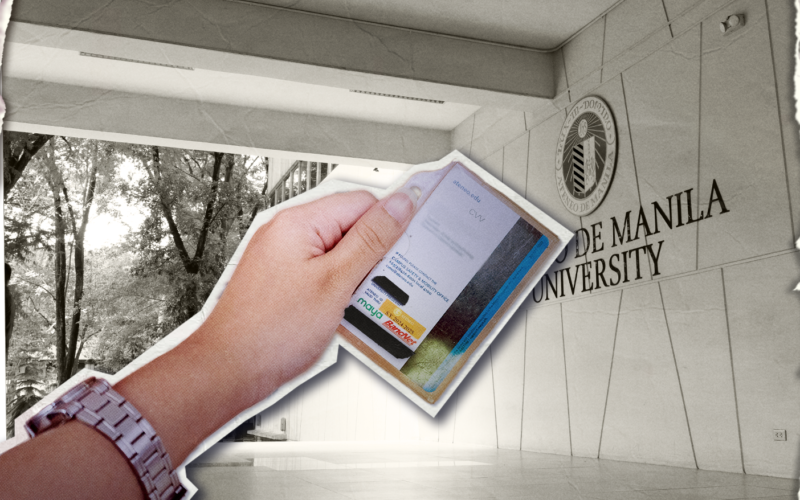Inside the laboratories of Schmitt Hall lies a 29-year-old lab balance that is reminiscent of the era of brick cellular phones, its sides turned yellow with age. The archaic apparatus is a functioning fossil, a living reminder of the Atenean scientists produced and legacies imprinted throughout the decades.
The School of Science and Engineering (SOSE) was formally established in the year 2000 and it professed to prepare students using the most advanced and appropriate technology available. Its mission is to instigate the formation of Filipino scientists and engineers, carefully instilling high ethical standards anchored in Ignatian values.
SOSE Dean Evangeline P. Bautista, PhD envisions the school as a leading Southeast Asian center of higher learning and her aspirations for the school come in line with Ateneo’s thrust to transform the university into a global institution. However, will this ambition be held back by the school’s aging equipment and facilities?
A microcosm of the earth
Experiential education in the laboratory setting is the globally preferred environment to conduct studies in the sciences. Researchers have found that students are more inclined to understand the inner workings of the natural world by experiencing scientific phenomena. This acquaintance, accompanied by a supportive material environment, fosters positive attitudes and interests in the field.
SOSE’s seven departments boast numerous facilities that encourage scientific learning. For instance, the Chemistry Department, which houses the National Chemistry Instrumentation Center, prides itself as being the country’s best equipped. Meanwhile, the Biology Department has laboratories that are sufficiently stocked with reagents (substances used in chemical reactions), and a 1:1 student-microscope ratio for its regular classes.
While these may sound promising, it seems that the experiences of some students are different inside the labs. Students had to contend over a single working micropipette that transfers exact amounts of liquids. Others have been reported to leave lab sessions halfway, only to return later so they may use the materials after the preceding group has finished. Some lamented the usage of reagents that had expired four years ago. For them, there is much to improve in terms of Ateneo’s facilities.
Global classrooms in the making
Kenny Malusay, a Chemistry Laboratory Technician, says that apparatuses are always lacking. He says that while there is a budget, it may not be enough for the sheer volume of students. When asked about expired reagents, he says, “Alam mo naman na Third World country tayo. ‘Di tayo katulad ng Japan at US na nagtatapon lang kapag expired na (You know very well that we are a Third World country. We are not like Japan or the US that throws away [reagents] when they’re expired).”
He also shares that students do not incur penalties for the wastage of chemicals, since breakage fees for lab equipment are paid for during enrollment. “Sobrang bait talaga ng Department at ng Ateneo. ‘Di lang mahigpit, kaya nga experiment ‘di ba? Kasi learning experience ‘yan. (The Department and Ateneo are really generous. They’re not as strict, that’s why it’s an experiment right? Because it is a learning experience).”
While occasional fires may have spurred due to worn rubber tubings, old materials that are still useful in the laboratory help to keep students in check and accountable for their actions. The absence of implements also have the potential to bring out the resourcefulness of instructors and pupils alike. Instead of purchasing clinometers to measure the height of trees, a student may improvise by forming a right triangle with his hand, measuring his distance from the tree, and approximating the height using trigonometric values.
Malusay quips that the 29-year-old laboratory balance may already receive Php 25,000 in the University Service Awards for its unwavering assistance to the Ateneo community. He admits that equipment will only be replaced if it is broken beyond repair. Chemistry Instructor Ericho M. Fuentes insists that “outdated equipment may suffice for a certain amount of time, but after a few years, old equipment may be deemed inefficient and invalid compared to the new ones released in the market.”
Biology Chair Crisanto M. Lopez, Dr. rer. nat. maintains that they have enough equipment. With support from the SOSE Dean’s Office, there are two new facilities that will contain sensitive instruments like the Quantitative Polymerase Chain Reaction (qPCR) machine and fluorescence microscope. He says that they prepared a five-year plan for purchasing equipment. Faculty members are also encouraged to gather support from external funding institutions like the Department of Science and Technology (DOST) to acquire the implements for research.
For improvement, Malusay proposed that the laboratories should be refurbished. “Alam mo paminsan, nahihiya kami sa mga estudyante. Kami kasi ‘yung mga naka-front. Bungad ng mga freshmen dito ‘yung C-207 na sobrang luma (You know sometimes, we feel ashamed to the students. We are the frontliners. The first thing that greets the freshmen is [Room] C-207 that’s very old).”
“The worst thing would probably be the state of the infrastructure itself. That’s a little bit more difficult to replace, because they usually cost millions,” Bautista acknowledges. Likewise, she has assured that renovations occur in phases and that replaced apparatus like microscopes are donated to public schools in need.
While departments have slowly been acquiring equipment to improve its facilities, exorbitant costs may hinder the upkeep of sophisticated laboratories. Though it is always an option to visit neighboring universities to borrow facilities unavailable within the Ateneo, it can easily demoralize students from treading greater strides in the field after graduation.
For instance, it is quite telling how statistics of Biology alumni over a period of ten years select their professions after graduation. Since 2007, 83.67% of the 496 alumni have chosen to attend medical school while only 5.44% pursued postgraduate studies or positions in the academe, industry, or research. Lopez supposes that more alumni have chosen careers in the medical field because of goals determined prior to enrollment in the university, but is optimistic that trends are changing with graduates finding jobs in the industries and non-governmental organizations.
Soaring above the skies
To further empower the sciences, institutions like the Ateneo would need to pool their resources with the state. However, Bautista admits that science has not been a government priority in the past. “Private universities, from their tuition fee, cannot afford it. They would really have to go to the government for funding. If the government does not fund, paano ka na? (what will happen to you?)”
Bautista highlights that the government has priority areas that may be influenced by changes in administration. For this, SOSE must not only align itself with the goals of the university, but also with the thrust of the government. “Otherwise, we would not be able to get funding. If you see that we have a lot of very good and expensive equipment, chances are they came from a grant from the government,” she explains.
As a candidate, now president Rodrigo Duterte threatened to remove Algebra, Calculus, and Trigonometry in the curriculum in favor of Business Mathematics, which he finds more practical. Despite this, his administration insists that it is promoting Science and Technology (S&T) amid the flight of S&T professionals for greener pastures abroad. A 2013 study estimates that the number of deployed overseas Filipino S&T workers ballooned from 9,877 in 1998 to 24,502 in 2009, an increase of 148%.
Early this year, DOST has secured the president’s approval on a ten-year Space Technology Development program. For now, among the agency’s strategies in preparation for the program is to train Filipino scholars abroad. DOST Secretary Fortunato Dela Peña says that the proposed scheme is for the best, but he hopes that the Philippines can one day train its own specialists. Research in space technology is expected to impact various areas like national security, climate studies, and hazard management.
Exploring boundaries
Studies suggest that knowledge is first retrieved inside the corners of an accommodating laboratory, especially in the era of technological advancements and increased standards in scientific education. Lopez believes that undergraduate laboratory courses will give the discipline, rigor, and skills for conducting experiments in actual research facilities.
Moreover, Lopez is determined that Ateneans and Filipinos are flexible and globally competitive. “Alumni who have gone as far as Europe have people who are impressed with them, especially with the skills they have gained here.”
Fuentes, on the other hand, observes that even non-science majors begin to develop interest after taking courses in SOSE, but he feels that the faculty should practice multidisciplinarity so scientific concepts can be integrated better in other professions.
According to Bautista, DOST recognizes the Ateneo as “probably the only university who can come up with real interdisciplinary projects.” She confesses that “in terms of content, it will be very difficult for us to compete with other universities,” but she is hopeful that “the core [curriculum] is our strength.” She wants biologists and chemists who are adept in Physics, as well as the Social Sciences and Humanities.
Bautista asserts that the most important quality of an Atenean innovator is a scientist for others. She hopes SOSE will produce interdisciplinary scientists who are problem solvers and good collaborators, “Even if we do not teach you all the content, we teach you how to learn, and we do a good job at that.”
In the Loyola Schools, no apparatus is too old for replacement or discontinued use. It seems that the 29-year-old laboratory balance may see more graduates in the coming years. Truly, equipment stand the test of time to tell the tales of failures and successes, which may ultimately mold the Atenean scientists of tomorrow.







